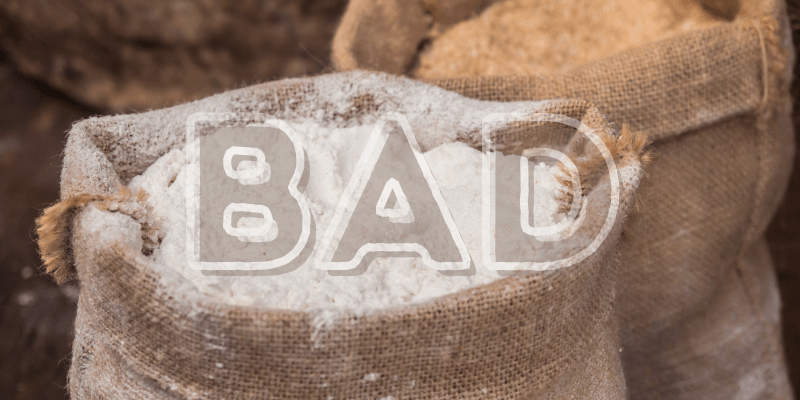How to Tell if Flour is Bad

Flour is a staple ingredient in baking and cooking, but like any food product, it can go bad over time. Using bad or expired flour can lead to unpleasant results in your culinary creations.
In this article, we will discuss how to tell if flour is bad, providing you with essential tips to ensure the quality and safety of your flour.
1. Understanding flour shelf life
Flour has a shelf life, which depends on various factors, including the type of flour and how it is stored. Generally, all-purpose flour can last for about 6 to 8 months, while whole wheat flour has a shorter shelf life of about 4 to 6 months. However, these are approximate guidelines, and the actual shelf life may vary.
2. Signs of bad flour
Before using flour in your recipes, it's essential to check for signs of spoilage. Here are some indicators that your flour may be bad:
- Unpleasant odor: Rancid or musty smell is a clear indication of bad flour.
- Unusual appearance: Look for discoloration, mold growth, or the presence of insects or pests in the flour.
- Texture changes: Clumping, hardening, or the development of lumps in the flour can indicate spoilage.
- Off taste: If the flour tastes sour or stale, it is likely past its prime.
3. Smell test
The sense of smell is an excellent tool to detect bad flour. Take a small amount of flour and give it a whiff. Fresh flour should have a neutral or slightly wheat-like aroma. If you detect any foul, rancid, or moldy smell, it's a strong indication that the flour has gone bad and should be discarded.
4. Visual examination
Inspect the flour for any visual abnormalities. Good flour should have a uniform color and appearance. Look out for any discoloration, dark spots, or specks of mold. If you notice any of these signs, it's best to discard the flour to avoid any potential health risks.
5. Texture check
Take a handful of flour and feel its texture between your fingers. Fresh flour should feel soft, smooth, and free-flowing. If you notice clumps, hardening, or the formation of lumps, it indicates moisture exposure, which can lead to spoilage. In such cases, it's advisable to discard the flour.
6. Storage tips for flour longevity
Proper storage can help extend the shelf life of your flour and maintain its quality. Here are some tips to ensure the longevity of your flour:
- Keep it sealed: Store flour in an airtight container or a resealable bag to protect it from moisture, pests, and contaminants.
- Store in a cool, dry place: Flour should be kept in a cool and dry pantry or cupboard away from direct sunlight and heat sources.
- Avoid exposure to air: Limit exposure to air by squeezing out excess air from the packaging or using a vacuum-sealed container.
- Rotate your stock: If you buy flour in bulk, make sure to use older batches first to prevent them from expiring.
Frequently Asked Questions (FAQs)
1. Can I use expired flour? Using expired flour is not recommended as it can affect the quality and taste of your baked goods. It's best to check for signs of spoilage before using any flour, regardless of the expiration date.
2. Can I use slightly discolored flour? Discoloration in flour is often an indication of spoilage. It's advisable to discard flour that shows signs of discoloration, as it may have been exposed to moisture or other contaminants.
3. Can I use flour with a mild odor? Flour should have a neutral or slightly wheat-like smell. Any unpleasant or strong odor suggests spoilage, and it's best to avoid using such flour.
4. How can I prevent flour from spoiling quickly? Proper storage is key to maintaining the freshness and longevity of flour. Keep it sealed in an airtight container, store it in a cool and dry place, and avoid exposure to air and moisture.
5. Can I freeze flour to extend its shelf life? Freezing flour can help extend its shelf life. Place the flour in a freezer-safe bag or container, removing as much air as possible. Frozen flour can last for up to a year, but it's important to thaw it completely before using.
By following these guidelines and being vigilant about the quality of your flour, you can ensure the best results in your baking and cooking endeavors while maintaining food safety standards. Remember, when in doubt, it's better to discard flour that appears spoiled rather than risk using it in your recipes.

Related Posts